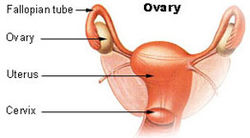
Well, well, well...it turns out that an organ in women long considered useless ("a vestigial structure") actually has a purpose. A recent study found that the rete ovarii may have an important role in the function of the ovaries, and therefore fertility.
The rete ovarii has 3 regions and responds to hormonal signals. It is a horseshoe-shaped network of tubes nestled beneath the ovary.
The study used female mice, but the researchers think the results also apply to humans. Other species of mammals (e.g., cows, sheep, dogs, cats, monkeys) also have a rete ovarii.
From Live Science: 'Useless' female organ discovered over a century ago may actually support ovaries, study finds
An unsung appendage in the female body, which has long been considered useless, may actually be essential for ovary development and fertility, a new mouse study finds. ...continue reading "Useless Female Organ Discovered To Have A Purpose"

 Another community of microbes found in humans in areas once thought to be sterile (without bacteria) - the ovaries and fallopian tubes in the female upper reproductive tract. And the interesting thing is that once again we see differences in the bacterial communities of areas with and without cancer (here the ovaries). From Science Daily:
Another community of microbes found in humans in areas once thought to be sterile (without bacteria) - the ovaries and fallopian tubes in the female upper reproductive tract. And the interesting thing is that once again we see differences in the bacterial communities of areas with and without cancer (here the ovaries). From Science Daily: